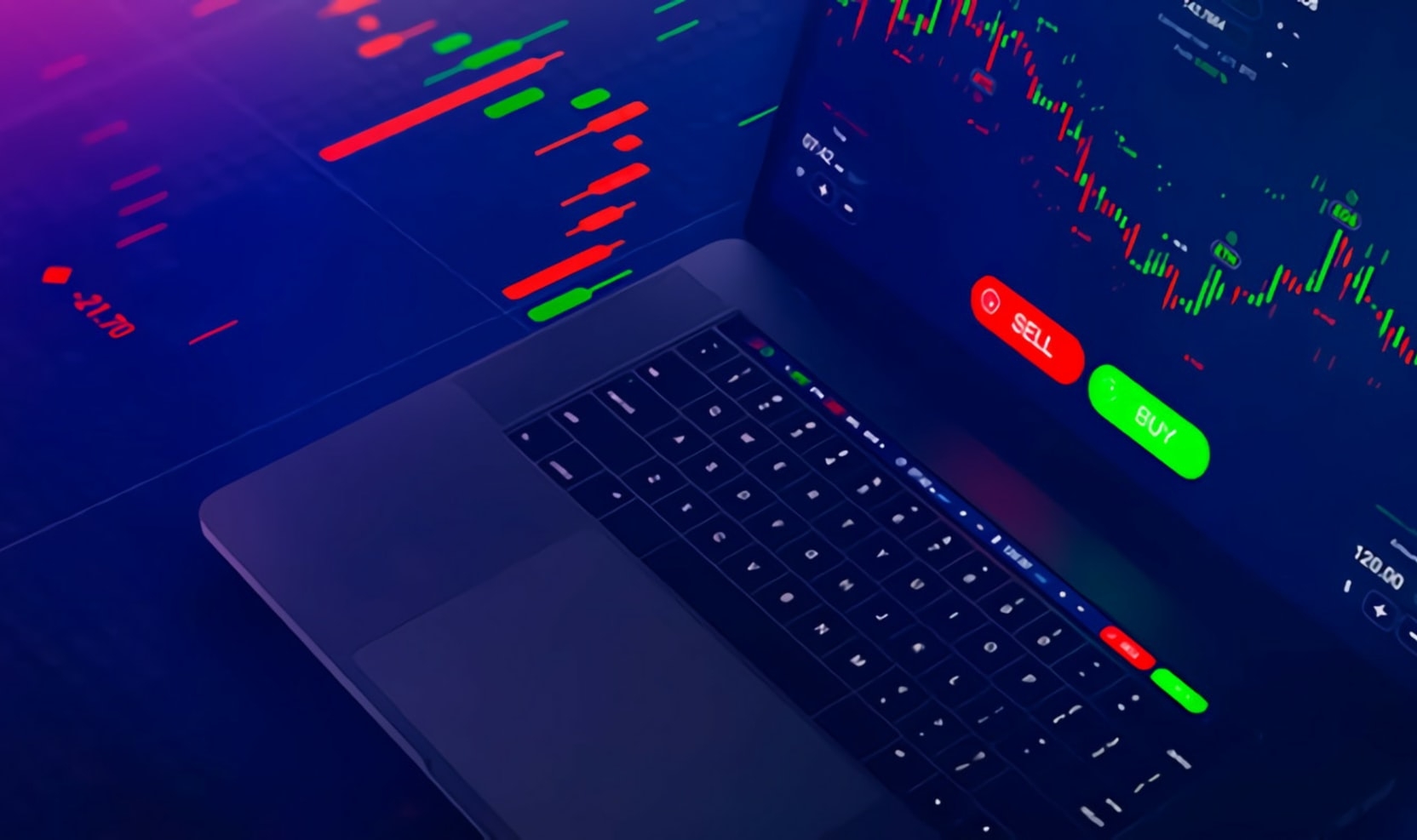
When Bitcoin was trading above $60,000 in October and November 2021, it was making headlines all around the world and in all types of media. Nevertheless, many people who were first exposed to Bitcoin and crypto at that time were turned away from investing by thinking that they are far too late to hop on the crypto train. While it is completely possible that today’s Bitcoin holders will never see such high gains as those enjoyed by the super early adopters between 2009 and 2011 when BTC started from literally $0, investing in crypto can still generate a nice profit.
In this article, we will cover the famous “buy the dip” strategy and review all major Bitcoin price dips since its creation. Since identifying a dip and its bottom is far from being simple, we will also present an alternative entry strategy for those who wish to minimize the effect of market volatility.
Should You Buy the Dip?
For example, at the time of writing, BTC is trading at less than one-third of its ATH, which is why the bear market represents a unique buying opportunity for everyone but especially for those who thought that they were too late when BTC was changing hands at a price above $50,000 per coin.
Bitcoin and other cryptos typically appear in mainstream media when the prices are surging, when in reality, these are usually the worse time to enter the market as it is often already hyperinflated. Even the famous American investor, Warren Buffett, pointed out that the most appropriate time to buy is when others are selling in his trading tip: “Be fearful when others are greedy, and greedy when others are fearful.”
To conclude, if you would like to follow the age-old traders’ strategy “buy low and sell high,” you actually have to buy the dip (may it be a minor or a major one). So, the question “Should I buy the dip?” is a real no-brainer – the answer is “absolutely yes!”.
How to Identify a Dip?
In crypto slang, we use the word “dip” to describe a period when a cryptocurrency experiences a price decline. On price charts, dips appear as prolonged periods of negative price movement, also referred to as “valleys”. Therefore, buying the dip stands for the process of buying an asset after it has declined in value. As you can see, identifying a dip isn’t that hard. The real problem is correctly identifying a dip’s bottom, as no one wants to buy an asset whose price will drop further soon after the purchase. At the same time, no one really knows how the market will play out in the future.
Historical Bitcoin Price Data and Bitcoin’s 4 Big Dips
In the following chapter, we will focus on Bitcoin’s 4 biggest price dips since it came to life in 2009. While mainstream media has almost every time written Bitcoin off as “dead”, BTC not only survived the harsh bear markets, but its price has always risen to new heights. Knowing how the market has played out in the past can prove to be very helpful in predicting the bottoms of the dips that have yet to come. Historically speaking, the most important trendline is the 200-week simple moving average – every time the price of BTC dropped below the SMA line or even touched it, things went south pretty quickly.
1. June 2011 – November 2011: First major BTC bear market (-93%)
The first significant BTC bear market took place in 2011 when the price dropped from $32 in June 2011 to only $2.2 in November 2011. The BTC sell-off and consequent price downtrend were caused by the hack of the largest crypto exchange at that time – the Mt.Gox exchange.
While the situation looked grim at that time, and BTC was not an established digital asset yet, many believed that this could be the end of Bitcoin’s story. And how has buying this dip played out so far? A hypothetical investor who bought BTC at this dip’s bottom and kept it until today would score an ROI of over 1,000,000%.
2. November 2013 – January 2015: Second major BTC bear market (-84%)
The second bear market was more prolonged as it took BTC over one year to find the cycle’s bottom. Despite the fact that the world’s largest cryptocurrency was already gaining momentum at that time, its price dropped from $1,100 in November 2013 to less than $180 in January 2015.
This time around, there were several bear market triggers. For starters, Bitcoin started getting associated with illicit activities as the FBI shut down the illegal goods and services platform Silkroad in October 2013. In addition, the notorious Mt.Gox became the target of another hack, causing more than 850k BTC to disappear from the exchange’s wallets resulting in the bankruptcy of the exchange.
In addition, it was at that time that China’s central bank barred financial institutions from handling Bitcoin transactions, causing newspapers and online outlets to write about “China’s Bitcoin ban” for the first time. Several market observers also believe that November 2013 was the first time that the “stupid” money started flowing into the crypto space as mainstream media reported about BTC hitting the $1000 mark. As a result, the price ballooned too quickly. Buying at the bottom of this dip would bring you a 12,300% ROI today.
3. December 2017 – November 2018: Third major BTC bear market (-84%)
Another longer bear market period that brought the price of BTC down by 84% took place between December 2017 and November 2018. In that time frame, the price dropped from $20,000 to a cycle low of $3,200. The third bear market was caused by traditional financial institutions spreading FUD in the crypto space. As several national banks and regulators started cracking on cryptocurrencies, the U.S. SEC was rejecting one BTC spot ETF application after another (this process is still ongoing).
In addition, the Tether FUD started spreading like fire around that time. The collapse of USDT, which was and still is the most used stablecoin, would have catastrophic repercussions, which many of the investors feared. Those that defeated the inner fear and bought at the bottom in November 2018 could have a 600% ROI by selling today.
November 2021 – Still ongoing: Current bear market, (-74% change to the current lowest price point)
The current bear market began after BTC reached an ATH price of $68,700 in November 2021. Currently, the low point of this bear cycle has been $17,700 in June 2022, but there is no guarantee that we won’t see an even lower BTC price in this cycle. The bear market began with the sell-off in the hyper-inflated market conditions but gained additional momentum because of the COVID-19 pandemic and the stagflation fears.
Lately, the war in Ukraine and high inflation causes central banks to raise interest rates, and therefore reducing liquidity for markets like crypto have been prolonging the downtrend. The collapse of the Terra (Luna) ecosystem and the bankruptcy of several crypto companies such as Celsius, 3AC, and others have pushed the crypto sector into a vicious cycle – making the situation even worse by dragging the prices further down.

Future BTC Price Prediction
Several technical analyses have projected that the bottom of this bear market will be found somewhere between 10,000 and $20,000. Judging by the average length of a bear market period, we are very likely not out of the bearish kingdom yet, which means BTC could dip even lower than $17,700.
Whatever the case, technical analysts are almost united in the claims that BTC will reach $100k in the next 2-3 years, after the next halving event (estimated to take place in June 2024). If these predictions materialize, someone buying at today’s prices could multiply his investment by almost 5x or even up to 10x if BTC plunges further towards the $10,000 mark.
Given the fact that BTC bounced back to a new ATH every cycle, the accumulation of BTC could be among the most lucrative investment decision to make right now – at least when looking at it from a historical standpoint.
The alternative is to buy altcoins. However, most altcoins are known to weather the storm of negative market activity worse than BTC. Nevertheless, buying established altcoins such as smart contract coins like Ethereum (ETH) and Polkadot (DOT) or exchange tokens like KuCoin Token (KCS) could be a good idea once the bottom is confirmed and the trend is reversed as they often outperform BTC in the bull market.
DCA bot: An alternative to trying to time the market
As you can see, the bear market represents a unique buying opportunity. But if you are not an experienced and active trader, it can be very hard to determine the exact bottom of the dip. In fact, while many market analysts won’t tell you or even admit it to themselves, no one can pinpoint the exact top and bottom unless they are manipulating the market.
This is where the dollar-cost averaging (DCA) investment strategy comes in. DCA essentially means that you are buying a certain asset on the same day each period (most commonly the same day of the week or month). In addition, you also invest the same amount of money every time.
Following the DCA strategy eliminates the short-term market volatility and is perfect for assets that are expected to rise in the long run. While dollar-cost averaging is suitable for any market condition, it makes the most sense in a bearish market, when you are getting the desired cryptocurrency at a discounted price. To simplify the strategy and eliminate the need for a periodical placing of market trade orders, several tools, such as the KuCoin trading bot, were created.
If you wish to buy crypto for the first time, you can register an account with KuCoin by clicking on the button above. If you stumble on a problem and need help, we’ve got you covered with our How-to-Guide on buying Bitcoin. Make sure to check our other How-to-Guides for more useful step-by-step guides. While they are written for beginners, even more advanced traders can find some useful tips and tricks.



